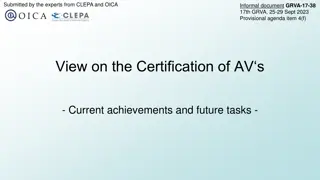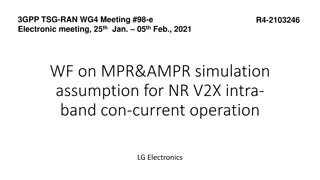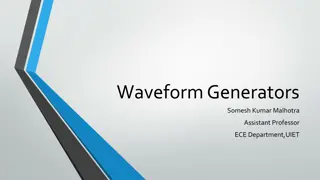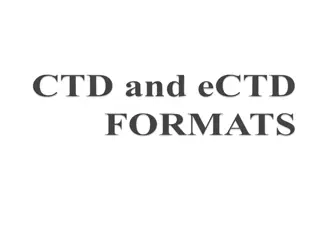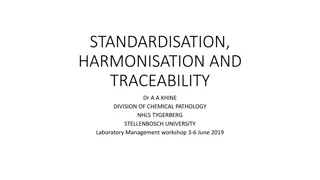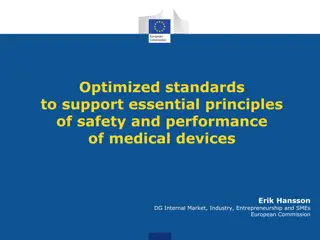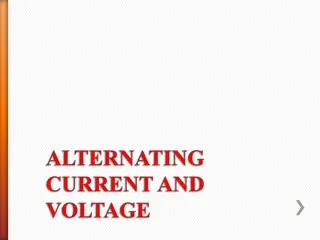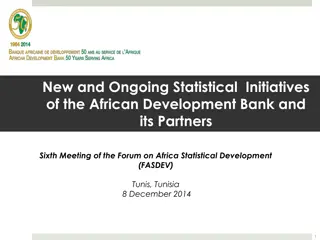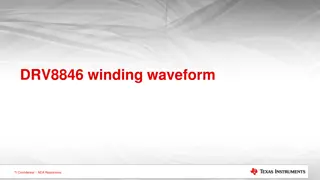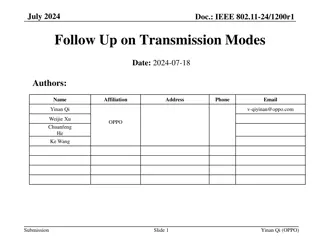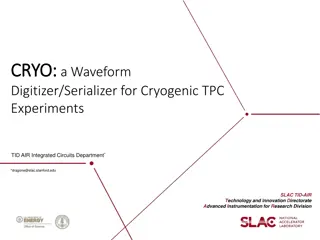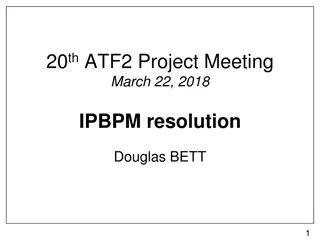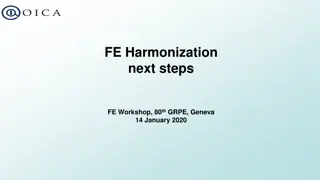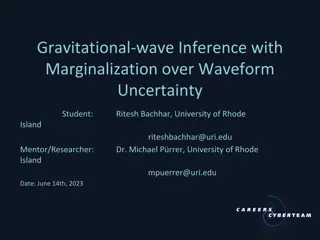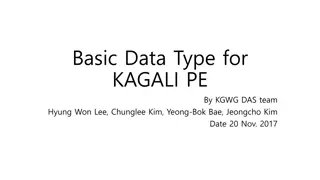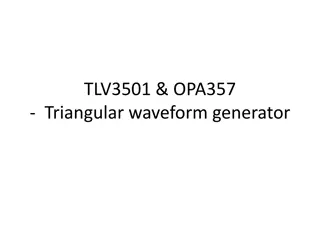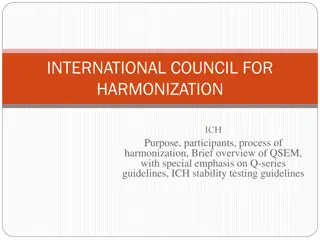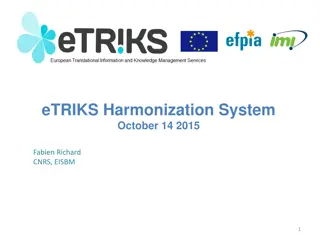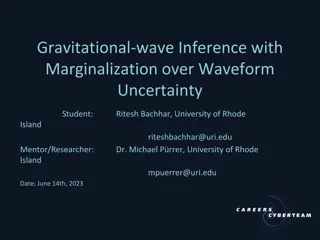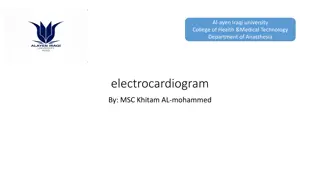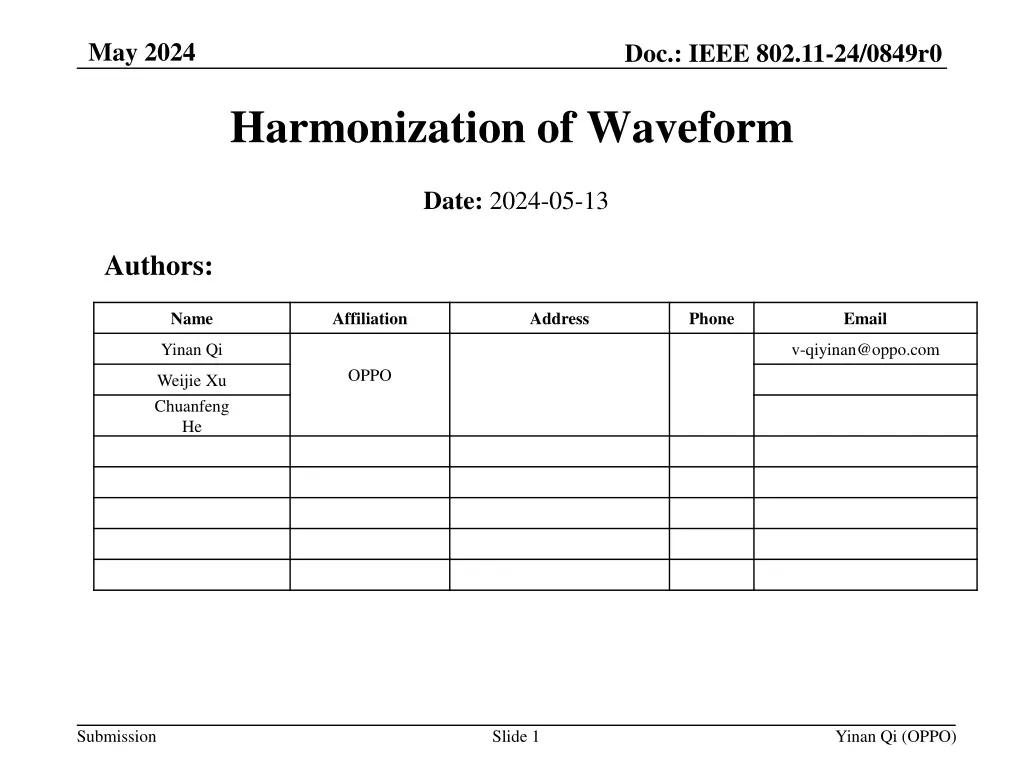
IEEE 802.11-24/0849r0 Harmonization of Waveform
Discussing the harmonized design for different scenarios in AMP, focusing on the need for harmonization due to diverging solutions in PHY and MAC design. The document covers solutions proposed, frame types, waveform types, and DL/UL waveforms. Different waveforms and frame types are considered for optimal design across scenarios. The objective is to achieve optimal design compromising between solutions.
Download Presentation

Please find below an Image/Link to download the presentation.
The content on the website is provided AS IS for your information and personal use only. It may not be sold, licensed, or shared on other websites without obtaining consent from the author. If you encounter any issues during the download, it is possible that the publisher has removed the file from their server.
You are allowed to download the files provided on this website for personal or commercial use, subject to the condition that they are used lawfully. All files are the property of their respective owners.
The content on the website is provided AS IS for your information and personal use only. It may not be sold, licensed, or shared on other websites without obtaining consent from the author.
E N D
Presentation Transcript
May 2024 Doc.: IEEE 802.11-24/0849r0 Harmonization of Waveform Date: 2024-05-13 Authors: Name Affiliation Address Phone Email Yinan Qi v-qiyinan@oppo.com OPPO Weijie Xu Chuanfeng He Submission Slide 1 Yinan Qi (OPPO)
Doc.: IEEE 802.11-24/0849r0 May 2024 Abstract In this contribution, we discuss the harmonized design for different scenarios in AMP. Submission Slide 2 Yinan Qi (OPPO)
May 2024 Doc.: IEEE 802.11-24/0849r0 Background Four solutions have been proposed and discussed so far Solution 1: active transmission [1]; Solution 2: long range backscatter with bi-static monostatic [1]; Solution 3: close range backscatter with full duplex monostatic [2]; Solution 4: legacy 802.11 devices enhanced with AMP features, e.g., extremely low power consumption, energy harvesting capability, etc. [3] Clearly, harmonization is needed Different solutions may diverge vastly in PHY and MAC design. Harmonization needs to start from basic design, e.g., waveform. Objective: optimal design for all solutions but may not be optimal design for each individual solution, thus compromise needed Submission Slide 3 Yinan Qi (OPPO)
May 2024 Doc.: IEEE 802.11-24/0849r0 Frame Types Considering wireless power transfer (WPT), 4 potential frame types need to be considered for new/enhanced design. DL communication: triggering frame + data frame UL data: data frame WPT: wireless power transfer frame CW: CW for backscattering DL comm. UL data WPT CW S1: Active S2: Backscatter (close range) S3: Backscatter (long range) S4: Legacy enhanced Submission Slide 4 Yinan Qi (OPPO)
May 2024 Doc.: IEEE 802.11-24/0849r0 Waveform Types Different waveforms have been proposed and discussed so far as in the below table DL comm. MC-OOK (AP) UL data OOK/PSK/ FSK/DSSS (AMP) OOK (AMP) OOK/PSK/ FSK/DSSS (AMP) WPT TBD (energizer) CW S1: Active S2: Backscatter (close range) S3: Backscatter (long range) TBD (AP/M) MC-OOK (AP) Pulse/OFDM (AP/M) TBD (energizer) Pulse/OFD M (AP/M) TBD (assistant node) S4: Legacy enhanced MC-OOK (AP) TBD (energizer) Submission Slide 5 Yinan Qi (OPPO)
May 2024 Doc.: IEEE 802.11-24/0849r0 DL/UL Waveforms DL: Triggering, DL data, Charging, CW S2: WPT and CW are jointly done. S3: WPT and CW can be either joint or separate, i.e., energizer and assistant nodes can be integrated or independent. S4: enhancement for the trigger frame and data communication with legacy protocols, e.g., 802.11b/n, thus no need to re-design. WPT waveform Sine wave: simple but not compatible with OFDM thus may need hardware upgrade. SC-OFDM: simple and compatible with OFDM, low PAPR with low WPT efficiency. MC-OFDM: complicated but compatible with OFDM, high PAPR with high WPT efficiency. OFDM based DL with simple reception UL: UL data Backscatter as baseline due to its more stringent design requirements. Active transmitter follow backscatter design. Waveform much simpler than OFDM is needed. Submission Slide 6 Yinan Qi (OPPO)
May 2024 Doc.: IEEE 802.11-24/0849r0 Harmonized Waveform Objective: optimal design for all solutions but may not be optimal design for each individual solution, thus compromise needed DL comm. OFDM based OOK (AP) OFDM based OOK (AP/M) OFDM based OOK (AP) OFDM based OOK (AP) UL data OOK/PSK/ FSK (AMP) WPT SC/MC- OFDM (energizer) SC/MC- OFDM (AP/M) SC/MC- OFDM (energizer) SC/MC- OFDM (energizer) CW S1: Active OOK (AMP) S2: Backscatter (close range) SC/MC-OFDM (AP/M) OOK/PSK/ FSK (AMP) S3: Backscatter (long range) SC/MC-OFDM (energizer/assista nt node) S4: Legacy enhanced Submission Slide 7 Yinan Qi (OPPO)
May 2024 Doc.: IEEE 802.11-24/0849r0 Harmonized Waveform DL: DL comm., WPT, CW Both MC-OOK and SC/MC-OFDM can be supported by OFDM transmitter thus can co-exist with legacy networks WPT and CW are jointly designed, i.e., energizer and assistant nodes are integrated OFDM based DL with different activated SCs UL: UL data Simple waveform: OOK as baseline and further consider PSK/FSK Submission Slide 8 Yinan Qi (OPPO)
May 2024 Doc.: IEEE 802.11-24/0849r0 Summary In this submission, the harmonization of waveform issues is discussed with following observations and conclusions: Waveform harmonization is potentially feasible with compromised design; For DL transmission including wireless power transfer, OFDM based waveform with simple reception can be employed with different number of activated SCs; For UL, simplicity is of ultimate importance and thus OOK/PSK/FSK can be considered. Submission Slide 9 Yinan Qi (OPPO)
May 2024 Doc.: IEEE 802.11-24/0849r0 Reference [1] 11-23-2203-01-0amp-updated-technical-report-on-support-of-amp-iot- devices-in-wlan [2] 11-24-0537-00-0amp-close-range-amp-wifi-reader-feasibility-study [3] 11-23-1159-00-0amp-thoughts-on-amp-iot-and-par Submission Slide 10 Yinan Qi (OPPO)

